This content has been archived. It may no longer be relevant
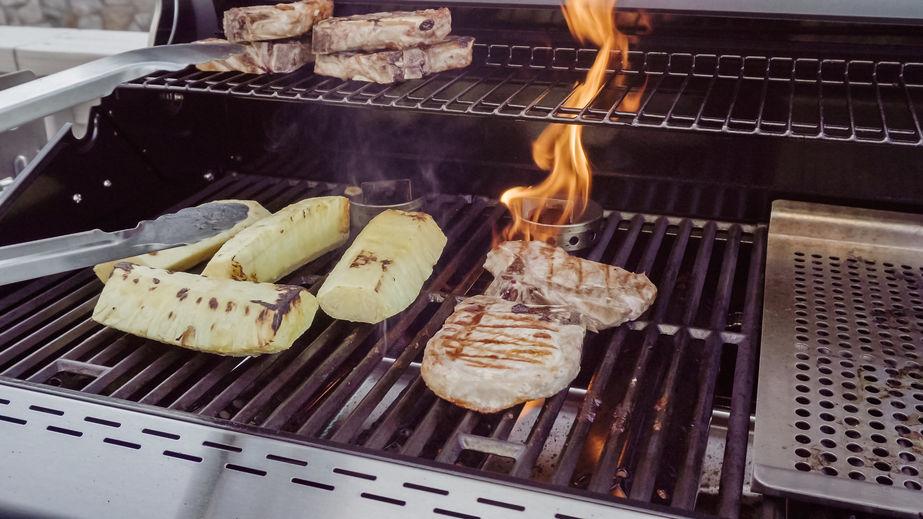
Adding flavor to your gas grill is crucial for achieving delicious and appetizing dishes.
Gas grills provide a convenient and efficient way to cook food, but they lack the natural smoky flavor that traditional charcoal grills offer.
Therefore, it is essential to find ways to add flavor to your gas grill cooking.
The taste of grilled food is not only affected by the type of food you cook, but also by the cooking method and seasonings you use.
Adding flavor to your gas grill can enhance the taste of your food, making it more savory, delicious, and enjoyable.
Moreover, adding flavor to your gas grill can also allow you to experiment with different cooking techniques and ingredients, giving you the opportunity to create unique and personalized dishes.
Therefore, understanding the importance of adding flavor to your gas grill is the first step towards achieving mouth-watering dishes that your family and friends will love.
Choosing the Right Type of Wood Chips for Your Gas Grill
Choosing the right type of wood chips is an important factor in adding flavor to your gas grill.
Wood chips are used to create smoke, which infuses your food with a delicious smoky flavor. H
ere are some tips for choosing the right type of wood chips for your gas grill.
- Consider the type of meat you are cooking. Different meats have different flavor profiles, and certain wood chips complement certain meats better. For example, apple or cherry wood chips work well with poultry and pork, while hickory or mesquite chips are better suited for beef and lamb.
- Choose high-quality wood chips. The quality of the wood chips you use can greatly affect the flavor of your food. Look for wood chips that are dry, without any mold or fungus growth.
- Experiment with different types of wood chips. Don’t be afraid to try different types of wood chips to see what works best for you. Some popular options include hickory, mesquite, apple, cherry, oak, and pecan.
- Soak the wood chips. Soaking the wood chips in water for at least 30 minutes before adding them to the grill can help create more smoke and enhance the flavor of your food.
In summary, choosing the right type of wood chips for your gas grill can significantly improve the taste of your grilled dishes.
Consider the type of meat you’re cooking, choose high-quality wood chips, experiment with different types, and soak them in water before use.
A smoker box can be placed on the grilling surface to infuse rich flavor into your food.
The Weber Stainless Steel Smoker Box is a reliable option designed for gas grills.
With wood chips, it’s best to go for a variety pack so that you can experiment with new flavors.
This Western BBQ Smoking Wood Pack has four unique flavors to try.
- Soak your wood chips for 30 minutes and pat dry.
- Add them to the smoker box and place the box over a burner at low or medium heat.
- Cook your ingredients away from the direct heat with the hood down until they reach the ideal temperature.
If you want to add flavor quickly, you can use the smoker box while cooking at standard grill temperatures.
The flavor will be less complex but still an improvement over cooking without smoke.
With a smoker box, you can experiment and develop your preferred cooking style for flavorful meat and vegetables cooked on the grill.
Using Marinades and Rubs to Enhance the Flavor of Your Grilled Meats
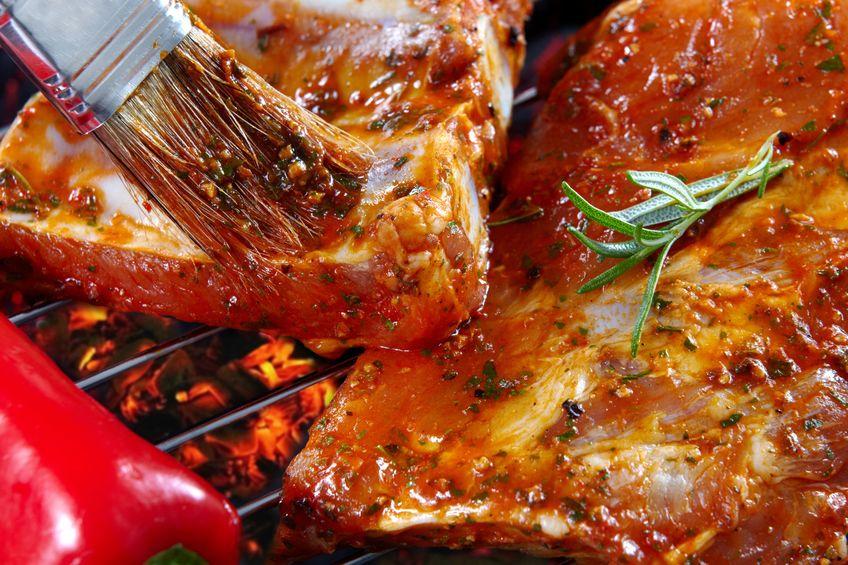
Marinades and rubs are two popular techniques for enhancing the flavor of grilled meats.
They are both easy to make and can add a depth of flavor to your dishes.
Here’s how to use marinades and rubs to enhance the taste of your grilled meats.
- Marinades. A marinade is a mixture of oil, acid, and seasonings that is used to flavor and tenderize meat. To use a marinade, simply pour it over your meat in a plastic bag or container and let it sit for several hours or overnight in the refrigerator. When you’re ready to grill, remove the meat from the marinade and pat it dry with paper towels before cooking.
- Rubs. A rub is a dry mixture of seasonings and spices that is rubbed onto the surface of the meat before cooking. To use a rub, simply coat your meat with the mixture, pressing it into the surface of the meat with your hands. Rubs can be used immediately before grilling or can be applied several hours ahead of time.
When using marinades and rubs, it’s important to remember that a little goes a long way.
Too much seasoning can overpower the natural flavor of the meat.
Also, be careful when grilling meat that has been marinated, as the sugar in the marinade can cause the meat to burn more quickly.
In summary, marinades and rubs are simple yet effective ways to enhance the flavor of your grilled meats.
Use them sparingly and experiment with different ingredients to find the perfect flavor combination for your taste buds.
This BBQ Basting Brush is made from stainless steel with silicone bristles and is perfect for use outdoors.
Simply give your ingredients a generous coating using the time guides above.
For the marinade, consider this Wickers Marinade and Baste Sauce.
It’s ideal for all meat types cooked on the grill. You can also use your favorite marinade or BBQ sauce to baste with.
This BBQ Seasoning Set is perfect for rubs. All of the rubs are sugar-free so you don’t need to worry about burning and bitter flavors.
This makes these a little more user-friendly if you haven’t used a rub for grilled meat. With a chicken, steak, and spice rub in the set, you’ll be able to use this set for anything from game, pork, and beef to poultry and fish.
Experimentation is key to enjoying different flavors every time that you cook.
Sear Your Steaks
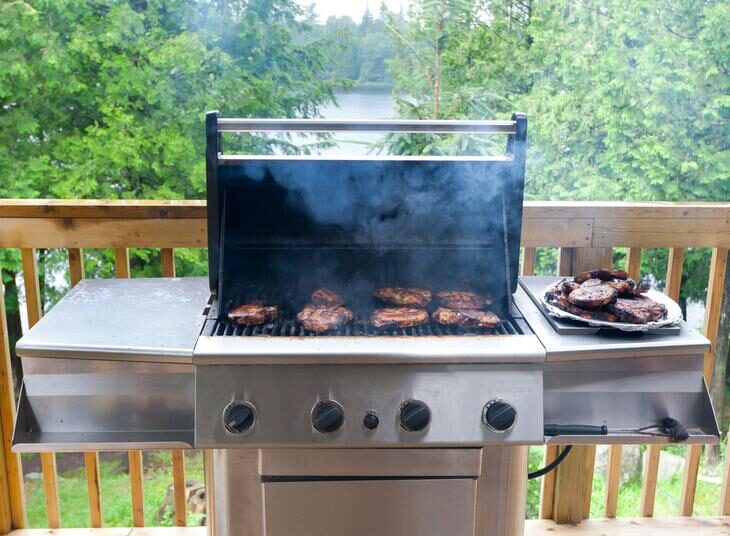 If it’s steaks that are causing you a flavor headache, you can get better results by changing your cooking method.
If it’s steaks that are causing you a flavor headache, you can get better results by changing your cooking method.
Some first-time grillers simply throw their steaks on the grilling surface and wait until they turn brown.
There’s a little more involved in getting the perfect grilled steak.
- Makes sure that you sear your steak on all sides at a high temperature. You can do this on a solid plate or cooking grids above an open flame. 1 – 2 minutes per side is enough to form a crust. Use grill tongs to hold the steak to sear the sides as well as the larger surfaces.
- When seared, take the steak off the direct heat and finish it with the hood down until you achieve your desired doneness.
Use a cooking thermometer like this Alpha Grillers Instant Read Meat Thermometer to check the internal temperature.
- Remove at 52°C / 125°F for Medium Rare
- Remove at 58°C / 136°F for Medium
- Remove at 68°C / 154°F for Well Done
Make sure to ALWAYS rest steaks for 5 minutes to allow the cooking process to finish before slicing and serving.
Tips for Incorporating Fruits and Vegetables in Your Gas Grill Cooking
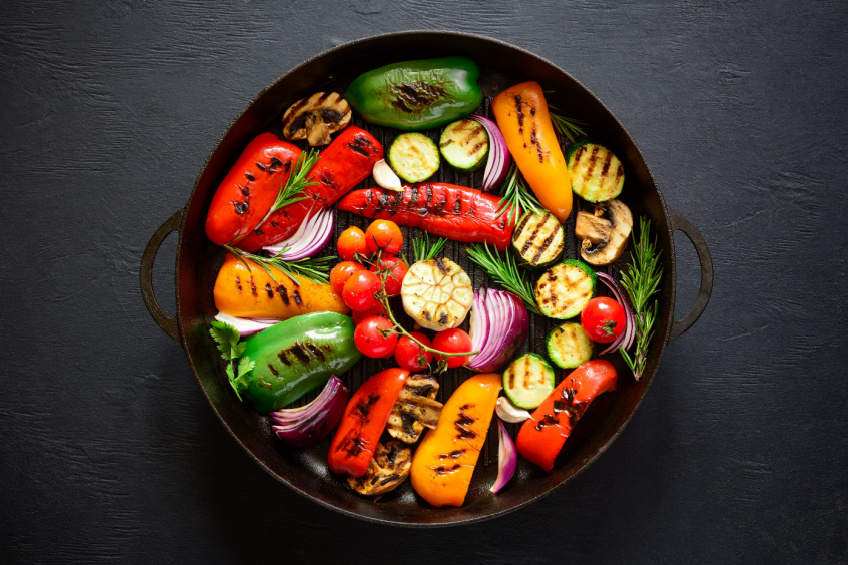 Incorporating fruits and vegetables into your gas grill cooking is a great way to add variety and nutrition to your meals.
Incorporating fruits and vegetables into your gas grill cooking is a great way to add variety and nutrition to your meals.
Here are some tips for grilling fruits and vegetables on your gas grill.
- Choose the right produce. Not all fruits and vegetables are well-suited for grilling. Choose produce that is firm and has a high water content, such as zucchini, peppers, onions, corn, pineapple, and peaches.
- Preheat your grill. Preheat your gas grill to medium-high heat before adding the fruits and vegetables. This will ensure that they cook evenly and don’t stick to the grates.
- Prepare your produce. Cut your produce into even-sized pieces to ensure that they cook evenly. Brush them with a light coating of oil to prevent sticking and add flavor. You can also season them with salt, pepper, or other spices.
- Use a grill basket or skewers. To prevent small pieces of fruits and vegetables from falling through the grates, use a grill basket or skewers. A grill basket is a wire mesh basket that holds the produce and allows it to cook evenly. Skewers are long, thin sticks that hold the produce in place.
- Pay attention to cooking time. Fruits and vegetables cook quickly on the grill, so be sure to keep an eye on them. Depending on the type and size of the produce, cooking times can range from a few minutes to 10-15 minutes.
Incorporating fruits and vegetables into your gas grill cooking can add delicious and healthy options to your meals. Follow these tips for a successful and flavorful outcome.
The Role of Indirect Heat in Adding Flavor to Your Gas Grill
Indirect heat is an important technique for adding flavor to your gas grill.
Indirect heat refers to a method of cooking where the heat is applied to the food indirectly, rather than directly underneath it.
This allows for slower, more even cooking, which can help to infuse the food with flavor.
Here are some ways in which indirect heat can add flavor to your gas grill cooking.
- Smoking. Indirect heat is commonly used for smoking meats, which can impart a smoky flavor to the meat. To smoke meat using indirect heat, wood chips are placed in a smoker box or wrapped in foil and placed on one side of the grill, while the meat is placed on the other side.
- Roasting. Roasting vegetables or meat using indirect heat can allow the flavors to develop slowly, resulting in a rich and flavorful dish.
- Baking. Indirect heat can also be used for baking bread or desserts on the grill. This can create a unique and delicious smoky flavor in your baked goods.
- Preventing burning. Using indirect heat can also prevent burning, which can give your food a bitter taste. By cooking your food on a cooler part of the grill, you can prevent it from charring and allow it to cook slowly and evenly.
In summary, indirect heat is an important technique for adding flavor to your gas grill cooking. It can be used for smoking, roasting, baking, and preventing burning.
Experiment with different techniques to see how indirect heat can enhance the flavor of your grilled dishes.
Experimenting With Different Cooking Methods to Add Variety to Your Grilled Dishes
 Grilling is a versatile cooking method that can be used in a variety of ways to add flavor and variety to your dishes.
Grilling is a versatile cooking method that can be used in a variety of ways to add flavor and variety to your dishes.
Here are some different cooking methods you can experiment with to add variety to your grilled dishes.
- Direct grilling. This is the most common grilling method, where the food is placed directly over the heat source. Direct grilling is ideal for thin cuts of meat, such as steaks, burgers, and hot dogs, as well as vegetables that cook quickly, such as asparagus and zucchini.
- Indirect grilling. This is a slower cooking method where the food is placed away from the heat source and cooked with indirect heat. Indirect grilling is ideal for larger cuts of meat, such as roasts and whole chickens, as well as foods that need to cook slowly, such as potatoes and corn on the cob.
- Smoking. Smoking is a low and slow cooking method where wood chips are used to add a smoky flavor to the food. Smoking is ideal for meats, such as ribs and brisket, as well as vegetables that can absorb the smoky flavor, such as eggplant and peppers.
- Rotisserie grilling. Rotisserie grilling involves cooking the food on a spit that rotates over the heat source. Rotisserie grilling is ideal for larger cuts of meat, such as whole chickens and roasts, as well as foods that need to be turned frequently, such as kabobs.
- Plank grilling. Plank grilling involves cooking the food on a wooden plank that has been soaked in water. This method adds a smoky flavor to the food and helps to prevent burning. Plank grilling is ideal for fish, such as salmon and trout, as well as vegetables that can be cooked on the plank, such as asparagus and mushrooms.
By experimenting with different cooking methods, you can add variety and flavor to your grilled dishes.
Try different techniques to see what works best for the types of foods you like to cook.
Sear Your Steaks

If it’s steaks that are causing you a flavor headache, you can get better results by changing your cooking method.
Some first-time grillers simply throw their steaks on the grilling surface and wait until they turn brown.
There’s a little more involved in getting the perfect grilled steak.
- Makes sure that you sear your steak on all sides at a high temperature. You can do this on a solid plate or cooking grids above an open flame. 1 – 2 minutes per side is enough to form a crust. Use grill tongs to hold the steak to sear the sides as well as the larger surfaces.
- When seared, take the steak off the direct heat and finish it with the hood down until you achieve your desired doneness.
Use a cooking thermometer like this Alpha Grillers Instant Read Meat Thermometer to check the internal temperature.
- Remove at 52°C / 125°F for Medium Rare
- Remove at 58°C / 136°F for Medium
- Remove at 68°C / 154°F for Well Done
Make sure to ALWAYS rest steaks for 5 minutes to allow the cooking process to finish before slicing and serving.
Cleaning Your Gas Grill to Prevent Flavor Contamination and Enhance Taste
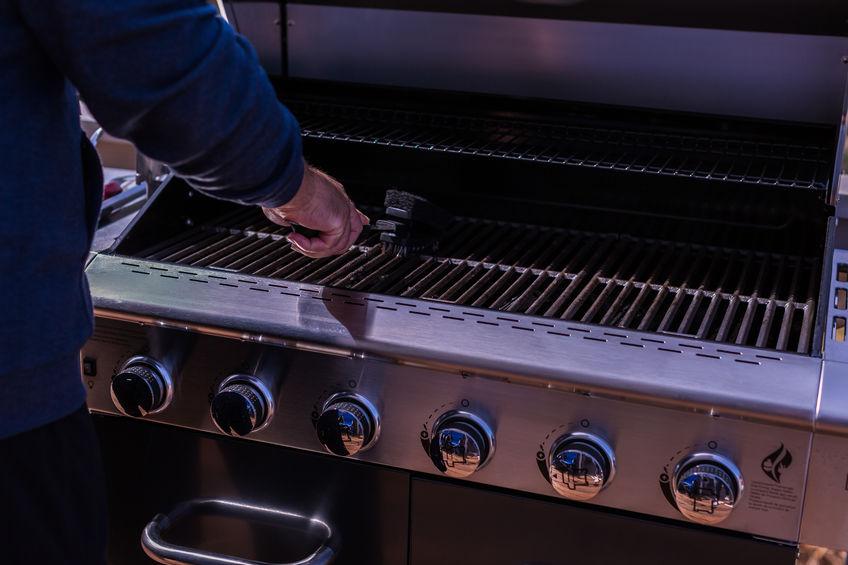
Cleaning your gas grill is an important step in preventing flavor contamination and enhancing the taste of your grilled dishes.
Over time, grease and food residue can build up on the grates and inside the grill, which can affect the flavor of your food.
Here are some tips for cleaning your gas grill.
- Preheat the grill. Before you start cleaning, turn on the grill and let it preheat for 10-15 minutes. This will help to loosen any debris and make it easier to clean.
- Brush the grates. Use a wire brush to scrub the grates thoroughly. This will remove any leftover food particles and help to prevent sticking during cooking.
- Clean the burners. Remove the grates and use a brush or cloth to clean the burners. Make sure to remove any debris or grease that may have accumulated.
- Empty the grease tray. Check the grease tray under the grill and empty it if necessary. This will prevent flare-ups and help to keep the grill clean.
- Clean the exterior. Use a cloth or sponge to clean the exterior of the grill. This will help to remove any dirt or grime that may have accumulated.
- Deep clean as needed. If your grill has a lot of buildup or is particularly dirty, consider doing a deep clean. This may involve removing parts of the grill and cleaning them with soap and water or a specialized grill cleaner.
By regularly cleaning your gas grill, you can prevent flavor contamination and enhance the taste of your grilled dishes.
Make sure to follow the manufacturer’s instructions for cleaning your specific grill model, and consider doing a deep clean at least once a season.
Flavor is All About Technique and Ingredients
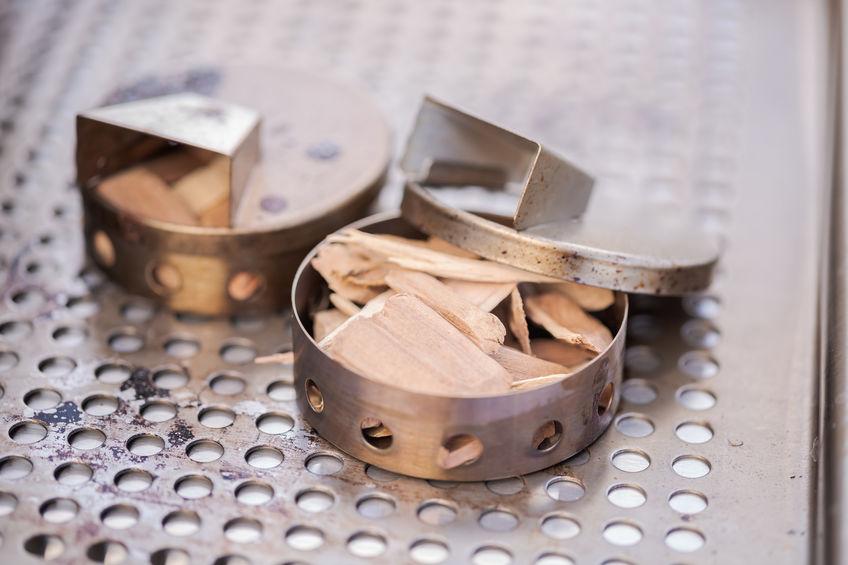
Grilling on a gas grill is a convenient and easy way to cook delicious meals for family and friends.
However, adding flavor to your gas grill is essential to creating truly memorable and delicious dishes.
Flavor is a combination of both technique and ingredients when it comes to grilling.
Even the best quality ingredients can be ruined by poor cooking technique, and a skilled griller can make even the simplest ingredients taste amazing.
Whether you’re using wood chips, marinades, rubs, or experimenting with different cooking techniques, there are many ways to enhance the flavor of your grilled dishes.
Additionally, keeping your gas grill clean and well-maintained is crucial to preventing flavor contamination and achieving the best possible taste.
By following the tips outlined in this article, you can take your gas grilling to the next level and impress your guests with your delicious and flavorful dishes.
